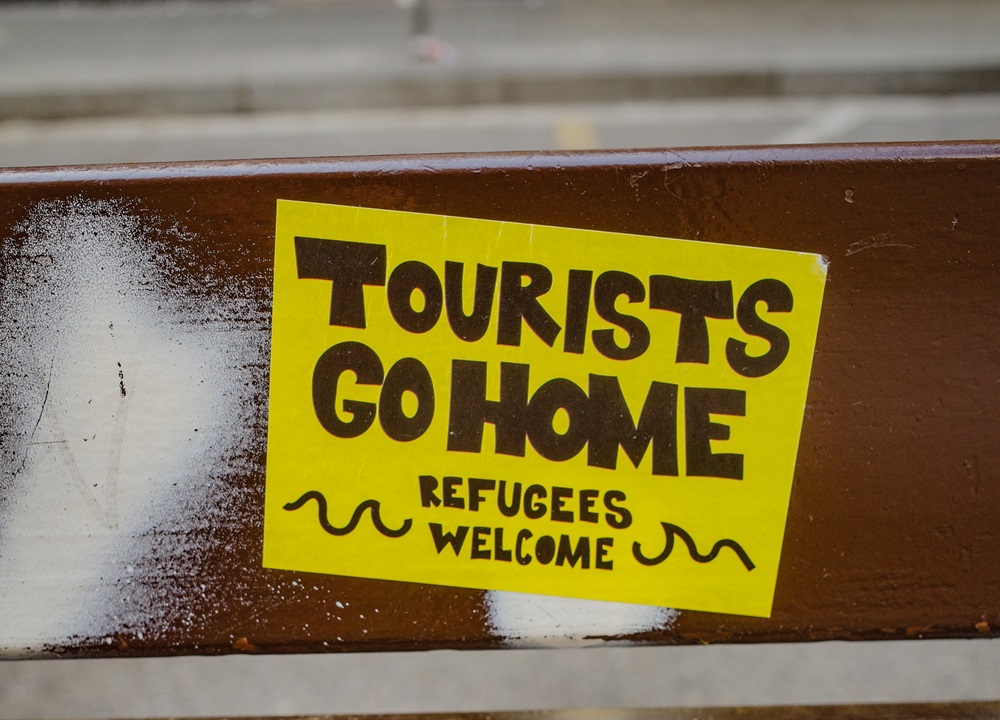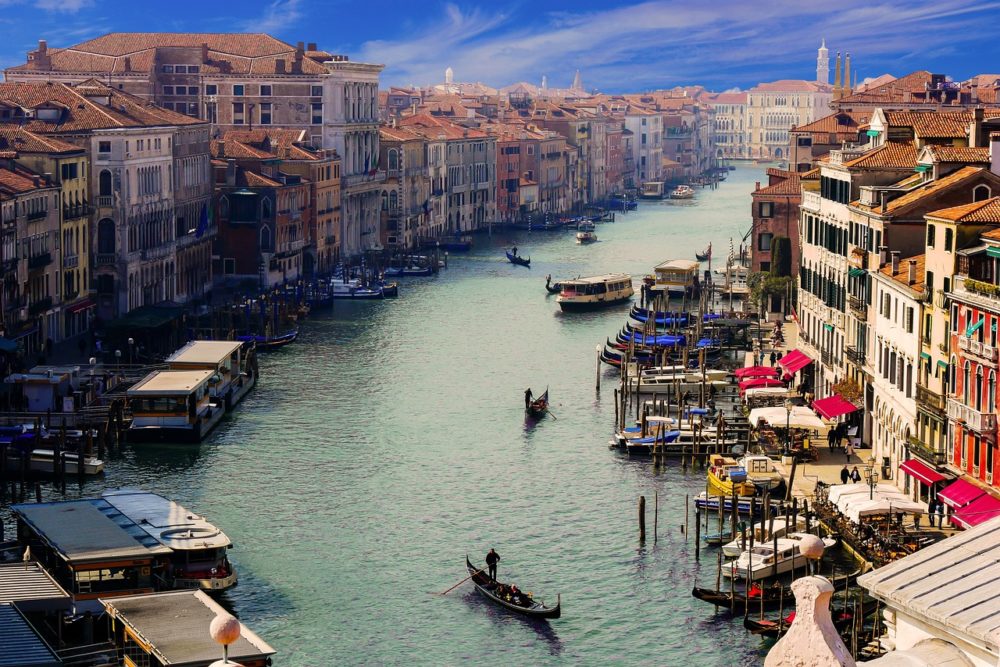Holiday hotspots need fairer tourism for local communities

Linda Osti, Senior Lecturer in Tourism Management, Bangor University
It all appeared to begin in early July with angry Barceloni residents squirting tourists with water as they sat on restaurant terraces.
“Tourists go home!” shouted locals to bemused diners in the busy Las Ramblas district, voicing their frustration at the problems their city faces, constantly overrun with visitors. Last year around 12 million people visited the Catalan capital, bringing €9.6 billion (£8.2 billion) to the local economy.
However, protests against tourism in Spain are not new. Anti-tourist graffiti – “Your luxury trip is my daily misery” – was appearing in Barcelona as early as 2017. Many academics, governments, and international agencies like the UN World Tourism Organisation saw COVID lockdowns as an opportunity to reset. They advocated for new forms of tourism, rejecting the unsustainable growth of the past.
In 2023 the bad behaviour of tourists and clashes with locals prompted the BBC to ask: “Is this the summer of bad tourists?” But what caused this year’s protests, and what can be done in the short term to support fairer tourism in travel hotspots, remains a pressing question with no easy answers.
The debate on the relationship between host communities and visitors has been an issue since mass tourism took off in the 1970s. Introduced in 1975, the Irridex model – known as “the irritation index” – suggests that residents’ attitudes toward tourism evolve, like grief, through several stages: starting with euphoria, then apathy, irritation, and eventually, antagonism. This progression occurs as the perceived costs of tourism begin to outweigh expected benefits with the growth of tourist numbers and destination development.
So is this antagonism a natural evolution of tourism in popular destinations? Or is it caused by untenable visitor numbers, bad behaviour, and a lack of co-ordinated vision for tourism by cities? Disentangling the complexity of the reasons for recent protests requires considering all of the above.
Tourists versus locals
The term “overtourism” frequently appears in the media, often reflecting a lack of effective management by local authorities. With tourism intensity growing, hotspot destinations face a simple choice: either carry on and become unsustainable, or opt to introduce regulation and become sustainable.
Both Catalonia and the nearby Balearic Islands have attempted to regulate tourism. A recent study on tourist tax revealed that these destinations use tax revenues to address the negative effects of tourism.
In the Balearics, the tax is used to fund sustainable projects including access to housing for local people. However, the pressures on the property market in these islands means these projects are insufficient.
In Catalonia, tourism tax goes to individual municipalities and the Catalan tourist board, which is focusing its efforts on promoting tourism inland and during the low season. On top, a surcharge came into force for Barcelona in 2021 and has steadily increased since.
Challenging
However, shifting from quantity to quality is challenging. In the past, tour operators held significant power, but new technology has shifted that power to tourists, who organise their own holidays through airline websites and accommodation platforms like Airbnb.
Often overlooked is the fact that tourism is a complex system with a variety of operators, vested interests, influences and competing needs. And the role of low-cost airlines is often neglected.
A Ryanair flight from London to Barcelona can cost less than £50, similar to the price of train ticket from London to Anglesey. At that price why would a Londoner choose a more sustainable holiday in Wales over Catalonia? Coupled with social media causing “uncontrollable marketing”, airlines are prompting shorter and cheaper holidays at hotspot destinations.
The surge of holiday rental platforms in cities like Barcelona is bringing primarily lower-paid jobs, contributing only marginally to local economies and causing property prices to inflate. This ends up affecting livelihoods and forcing poorer people to move out of their communities.
In response, the city’s mayor Jaume Collboni announced that holiday flat permits would not be renewed at the end of their existing four-year term. Which means by 2028, 10,000 rental flats will be returned to the housing market for sale or long-term rent for city dwellers.
Time for a shift
Other destinations, like Venice, have gone further, introducing a day-visitor fee. But is this sufficient to control numbers and bring the power back to local residents? The experimental period came to an end on July 14 2024, and has certainly raised funds for the maintenance of Venice. But has it deterred day visits to the city or improved the lifestyle of Venetians? This is yet to be investigated.

Government interventions often have limited success. Part of the problem is visitors themselves, who need to be educated towards a more sustainable way of holidaying. And part of the problem lies with entrepreneurs, who are profiting from the tourism industry at the expense of local communities who can’t afford to live there.
So a shift is required: one that involves, essentially, local communities in the development – and often redevelopment – of tourism. Tourist boards, visitor organisations and government agencies need to embrace more projects that are community-led and community-based. This form of tourism can help redistribute the economic benefits and foster greater acceptance of the annual influx of visitors that disrupts entire cities.
But this idea has its challenges. Tourism based around communities requires years of planning, especially in larger urban areas like Barcelona. Communication, tolerance and building trust between residents and government agencies is essential.
Meantime, in Santorini last month, residents were told to stay at home so that tourists can wander around the island. All this does is cause more resentment towards tourists, and trust in the authorities diminishes. It appears that 2024 signals a low point in mass tourism – solutions need to be found fast. For now, Barcelona seems to be listening to its citizenry and has made a commendable start.
This article was first published on The Conversation
![]()
Support our Nation today
For the price of a cup of coffee a month you can help us create an independent, not-for-profit, national news service for the people of Wales, by the people of Wales.





Generally agree. A tourist tax will alleviate larger issues roads and toilets etc . Councils like Gwynedd and NGOs need to do more in passing on benefits to residents. Such as free parking all year, free or reduced entrances to attaractions and a curb on the noise made by venues and accommodation sites.
Sustainable tourism is only possible when the visitor economy is properly managed. Only local government can manage their visitor economy. Local government can only do this with funding. The only source of funds are a visitor levy, council tax or handouts from other tiers of government. Everyone agrees that sustainable tourism is a good thing but no-one will agree who should pay for it. The problem with local residents paying is this hurts councillors at the ballot box. There’s always pressure to spend and do as little as possible. The problem with relying on other tiers of government is this… Read more »